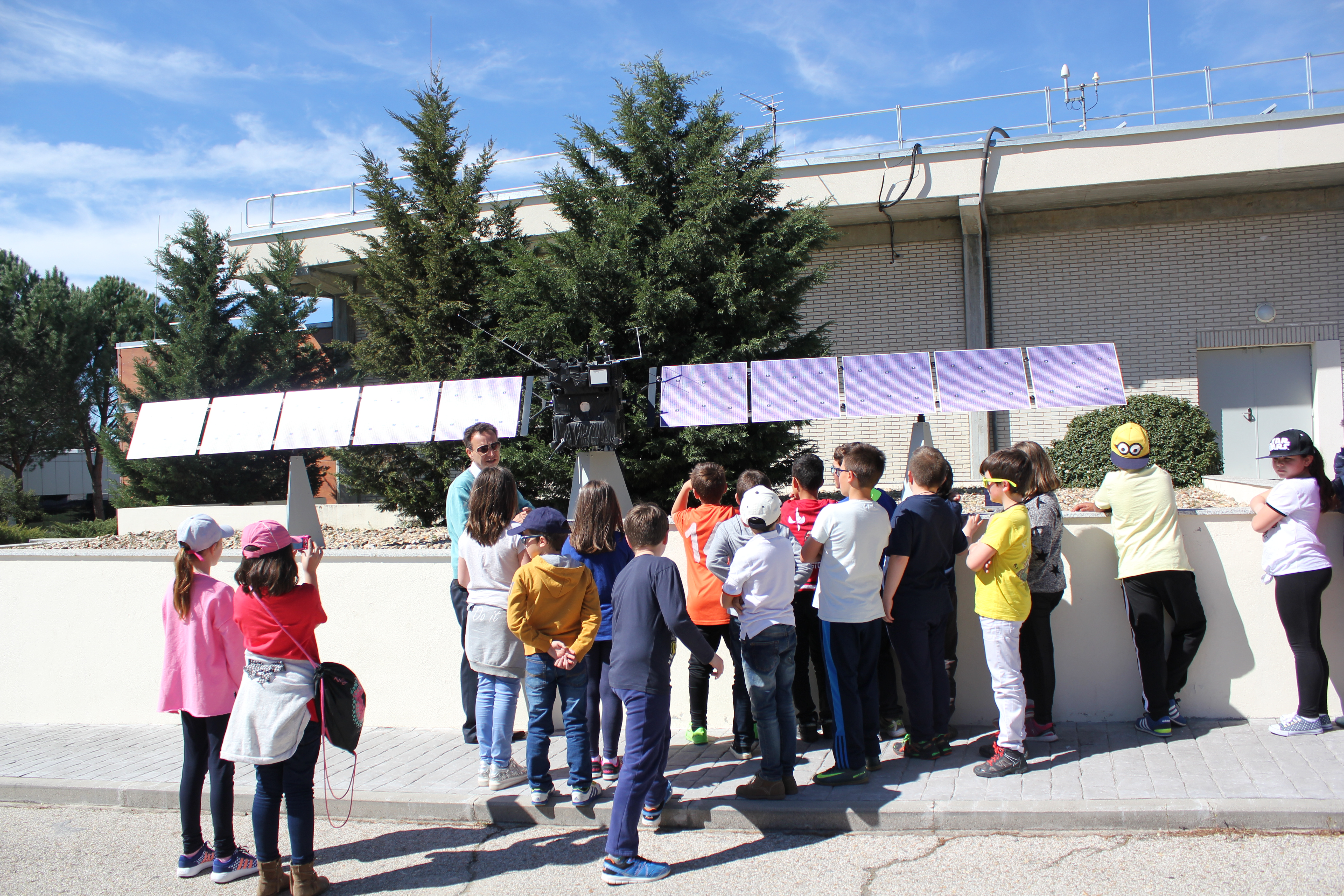Mission to the Moon - CRA Elena Fortún school
05/April/2017Third & Fourth year of primary school - 54 students
On April 5, a group of 54 students from Cuenca in their third and fourth year of the primary school came to ESAC with their teachers to work with the CESAR Team in the only centre that the European Space Agency has in Spain: ESAC. The mision chosen by the students to work with ESA scientist and engineers "Mission to the Moon".
At their arrival to ESAC the students explained the CESAR Team what have they learnt up to the date within the Space-Science Experience that they have started in their classrooms. It was in the school, before coming to ESAC, when they started this Experience by watching a serie of videos that explained what the European Space Agency is and the different space mission in which the Agency worked and currently work. It was from the schools were the students also made a remote connection through Skype with the CESAR team coordinator, Dr. Michel Breitfellner, who gave them a warm welcome and answered their questions.
But let's come back to the big day (April 5), when the students came to ESAC to work in a scientific mission. They arrive with a lot of enthusiam and questions. The 5-key-questions from their point of view were extensively answered to them as soon as they arrived.

Once the question's time (for their 5-key-questions) expired, the group was divided into two groups. The first one started straight away to develop a Mission to the Moon, with the specific details they considered most suitable for them meanwile the other group started a tour around the spacecraft mock-ups of some of the most relevant ESA missions. At the time that the CESAR Team explained the students the key points of the Rosetta, SOHO, ISO and the Herschel mission also answered to the questions that started to trigger into the students once that the Space started to be a closer place for them.
The students enjoyed a lot imitating the movement of the planets within the solar system, lead by Dr. Michel, and understanding where the satellites could be best set depending on the mission scientific goal: does it want to study the Sun? the Earth? any solar system planet? the outer space?
The students and their teacher also had the chance to visit the XMM-Newton control room, where at the moment the scientific data of the mission are received in real-time and their quality is assessed.

The group that started to work in the Mission to the Moon was divided into five teams. Each of the teams decided whether wanted to be the engineer team in charge of designing the rocket ot the team in charge of designing the spacecraft or the team in charge of designing the orbit and set up the taking-off and landing dates or the team that identifies what is need to be taking with you in this kind of missions. Each of the five teams worked in a different task, all of them required to built a mission, as it is done for the European Space Agency.
Once each of the groups completed their tasks (be scientist & engineers and make a tour through the spacecraft models) they swap their activities. The explores, already knowing how the different missions are designed applied this knowledge in the design of their mission to the Moon. The scientist and engineers that had already design their mission to the Moon were very interested to know about the specific questions and shape/sizes/weight of the ESA models that we were seing in the tour.
It was a quite successful and fun day for the students, teachers and the CESAR Team.
From Cuenca to the Moon passing through ESAC!! 